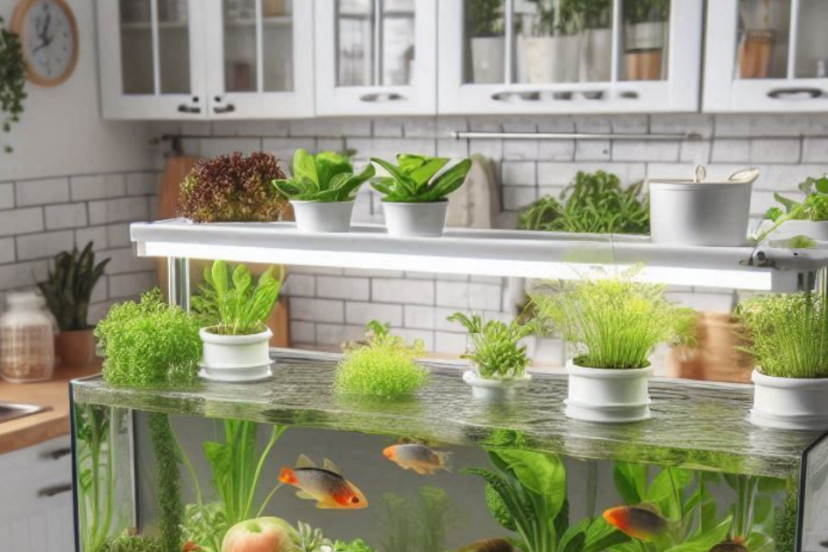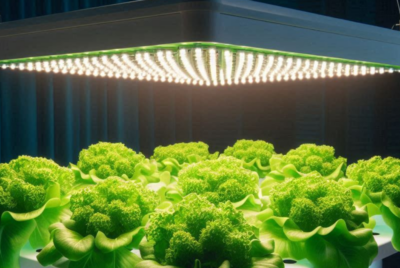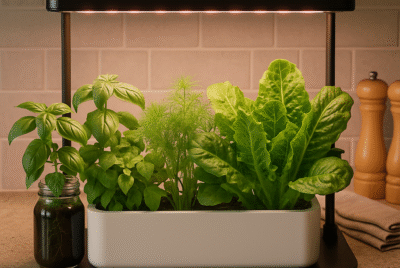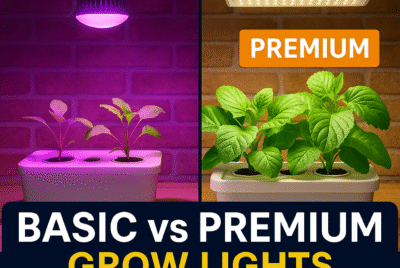Hydroponic Fish Tank: A Comprehensive Guide to Aquaponics at Home
Introduction
What is a Hydroponic Fish Tank?
A hydroponic fish tank, commonly known as an aquaponic system, is a sustainable method of raising both fish and plants in a recirculating environment. In this system, fish waste provides organic nutrients for plant growth. Plants will also help to filter and clean the water, creating a balanced ecosystem. Unlike traditional aquariums or hydroponic gardens, aquaponics integrates both elements to optimize growth and health for both plants and fish.
Benefits of Hydroponic Fish Tanks
- Sustainable Food Production: By combining fish farming and plant cultivation, aquaponics allows for the production of fresh vegetables and fish, contributing to food sustainability.
- Water Efficiency: This system uses significantly less water than traditional farming, as the water is continuously recycled.
- Space Saving: Perfect for urban settings, hydroponic fish tanks can be set up in small spaces, including indoors, on balconies, or in backyards.
- Chemical-Free Growing: Aquaponic systems avoid the use of synthetic fertilizers and pesticides, making the produce healthier and environmentally friendly.
- Educational Value: These systems provide a hands-on way to learn about ecosystems, biology, and sustainable agriculture, making them great for educational purposes.
Best Hydroponic Fish Tanks
1. Back to the Roots Water Garden (Best for Beginners)
Description:
The Back to the Roots Water Garden is a user-friendly, all-in-one aquaponic system that combines a fish tank with a mini hydroponic garden on top. The fish waste fertilizes the plants, and the plants naturally filter the water, making it a low-maintenance option.
Pros:
– Educational: Perfect for teaching kids and beginners about ecosystems and sustainability.
– Compact Design: Small enough to fit on a countertop or desk.
– Self-Cleaning: Minimal maintenance as the plants help keep the water clean.
Cons:
– Small Tank: Limited space for fish, best suited for a betta or small goldfish.
– Light Requirements: Some users find that plants need extra light to thrive.
– Noise: The water pump can be slightly noisy, as noted by some reviewers.
2. Penn-Plax Aquaponic Betta Fish Tank (Best for Beginners)
Description:
This is a budget-friendly, small aquaponic tank designed specifically for betta fish. It features a planter on top for growing small plants, which are nourished by the fish waste, making it a simple and accessible option for beginners.
Pros:
– Affordable: A great entry-level option for those new to aquaponics.
– Easy Setup: Straightforward to set up and maintain.
– Space-Saving: Compact design, ideal for small spaces like apartments or offices.
Cons:
– Limited Plant Growth: Only suitable for small plants or herbs.
– Plastic Material: The tank is made of plastic, which some users feel isn’t as durable or aesthetically pleasing.
3. AquaSprouts Garden (Best for Mid-Level Users)
Description:
The AquaSprouts Garden turns any standard 10-gallon aquarium into a fully-functioning aquaponic system. It includes a grow bed, light bar, and a water pump, making it a great choice for those ready to take their aquaponic gardening to the next level.
Pros:
– Versatile: Compatible with any standard 10-gallon tank, offering flexibility in design.
– Large Grow Bed: Ample space for growing a variety of plants.
– Durable: Made with high-quality materials, ensuring long-term use.
Cons:
– Price: More expensive than simpler, all-in-one systems.
– Setup Time: Requires more time and effort to set up compared to beginner kits.
– Regular Maintenance: Needs ongoing attention to maintain plant and fish health.
4. Finnex PX-360 Compact Canister Aquarium Filter (Used with DIY Aquaponics) (Best for Experts)
Description:
While not a complete hydroponic fish tank system, the Finnex PX-360 is a powerful, compact canister filter often used by expert hobbyists to create custom DIY aquaponic systems. It’s ideal for those who want to design their own setup from scratch.
Pros:
– Powerful Filtration: Excellent filtration capacity for small to medium tanks.
– Quiet Operation: Runs quietly, which is a plus for indoor setups.
– Compact Design: Small and unobtrusive, making it easy to integrate into custom systems.
Cons:
– Not a Complete System: Requires additional components to create a full aquaponic setup.
– Frequent Cleaning: Needs regular cleaning to maintain performance.
– Instructions: Some users find the instructions unclear, making setup tricky.
Which Is Best for You?
– Beginners: If you’re new to hydroponic fish tanks, the Back to the Roots Water Garden or Penn-Plax Aquaponic Betta Fish Tank are great choices. They’re easy to set up, affordable, and low-maintenance.
– Mid-Level Users: The AquaSprouts Garden is perfect for those with some experience who are ready to upgrade to a more versatile and customizable system.
– Experts: If you’re an experienced aquaponics enthusiast, the Finnex PX-360 Compact Canister Aquarium Filter are ideal. It offers more flexibility and control, allowing you to create a more complex and tailored system.
Getting Started with Hydroponic Fish Tanks
Choosing the Right Tank
- Size and Capacity: Consider the size of your available space and how much produce you want. A 20-gallon tank is a good starting point for beginners.
- Material: Glass and acrylic are common materials. Glass is scratch-resistant but heavier, while acrylic is lighter and more impact-resistant.
- Shape: Rectangular tanks provide more surface area for plants and fish to thrive. They are easier to clean and maintain.
- Location: Place your tank where it can get adequate light but is not subject to temperature extremes or direct sunlight, which can encourage algae growth.
- Accessibility: Ensure the tank is easily accessible for maintenance tasks like feeding fish, checking water quality, and harvesting plants.
Selecting the Right Fish
- Tilapia: Highly recommended for beginners due to their hardiness, fast growth, and tolerance to varying water conditions.
- Goldfish: Affordable and easy to care for, they produce a lot of waste which is beneficial for plant growth.
- Catfish: Another great option, especially for warmer climates. They are resilient and efficient waste producers.
- Koi: These are visually appealing and robust, although they require more space as they grow quite large.
- Trout: Suitable for colder environments, trout can provide a delicious food source,
but they require colder water temperatures and more oxygen than other fish species, so proper equipment and monitoring are essential.
Picking Suitable Plants
- Leafy Greens: Lettuce, spinach, and kale are excellent choices for beginners as they grow well in aquaponic systems and have short harvest times.
- Herbs: Basil, mint, and cilantro thrive in hydroponic environments and add flavor to your meals.
- Tomatoes: Although they require more space, tomatoes can be grown successfully in aquaponic systems, providing fresh, flavorful fruits.
- Bell Peppers: These colorful vegetables grow vertically and produce high yields in aquaponics setups.
- Strawberries: Perfect for hanging baskets, strawberries love the nutrient-rich water of hydroponic systems and produce sweet, juicy berries.
Setting Up Your Hydroponic Fish Tank
Equipment Needed
- Fish Tank: Choose a size that fits your space and requirements, ensuring it’s made of non-toxic materials.
- Grow Bed: This is where your plants will grow. It can be a separate container or integrated into the fish tank.
- Water Pump: Circulates water from the fish tank to the grow bed and back, ensuring proper oxygenation and nutrient distribution.
- Aeration System: Provides essential oxygen for fish and beneficial bacteria in the water.
- pH Testing Kit: Monitor the pH levels of your water regularly to ensure optimal conditions for both fish and plants.
Step-by-Step Setup Process
- Prepare the Tank: Clean the tank thoroughly and set it up in its desired location, ensuring it’s level and stable.
- Install Grow Bed: Place the grow bed above the fish tank, ensuring it’s securely supported and level.
- Add Substrate: Fill the grow bed with a suitable growing medium like gravel, clay pellets, or coconut coir.
- Add Water: Fill the tank with dechlorinated water, leaving enough space for the water to cycle through the system.
- Introduce Fish: Acclimate your fish to the tank water temperature and carefully add them to their new home.
- Plant Your Seeds: Plant your chosen seeds or seedlings in the grow bed, ensuring they’re properly spaced and covered with growing medium.
- Start the System: Turn on the water pump and aeration system, allowing the water to circulate through the tank and grow bed.
Maintaining a Healthy System

Water Quality Management
- Monitor pH Levels: Keep the pH between 6.8 and 7.2 for optimal nutrient uptake by plants and fish health.
- Check Ammonia and Nitrite Levels: These compounds are produced by fish waste and should be kept at low levels to avoid toxicity.
- Perform Regular Water Changes: Replace 10-20% of the water weekly to remove excess nutrients and maintain water quality.
- Clean the Tank and Grow Bed: Remove debris and algae regularly to prevent clogging and ensure optimal plant growth.
- Test Water Temperature: Keep the water temperature stable, ideally between 75-85°F (24-29°C), to promote fish metabolism and plant growth.
Feeding Your Fish
- Feed Sparingly: Avoid overfeeding your fish, as excess food can lead to water pollution and health problems.
- Provide a Balanced Diet: Offer a variety of high-quality fish pellets, flakes, and live or frozen foods to ensure your fish get all the nutrients they need.
- Monitor Fish Behavior: Watch for signs of underfeeding or overfeeding, such as lethargy, loss of appetite, or aggressive behavior.
- Adjust Feeding Frequency: Feed your fish 2-3 times a day, only as much as they can consume in a few minutes.
- Consider Supplementary Feeding: Depending on your fish species and system size, you may need to supplement their diet with additional nutrients like calcium or vitamin D.
Plant Care Tips
- Prune Regularly: Remove dead or yellowing leaves and trim overgrown stems to encourage new growth and prevent disease.
- Support Heavy Plants: Provide stakes or trellises for taller plants like tomatoes or peppers to prevent them from toppling over.
- Harvest Regularly: Harvest mature fruits and vegetables promptly to encourage continuous production and prevent overcrowding.
- Monitor Nutrient Levels: Test the nutrient levels in your water regularly and adjust as needed to ensure optimal plant health and growth.
- Rotate Crops: To prevent nutrient depletion and disease buildup, rotate your crops every few months, replacing them with fresh seedlings or seeds.
Troubleshooting Common Issues
Algae Growth
- Limit Light Exposure: Reduce the amount of direct sunlight reaching your tank and grow bed to minimize algae growth.
- Add Algae Eaters: Introduce algae-eating fish like plecos or snails to help control algae growth naturally.
- Use Algae Inhibitors: Add commercial algae inhibitors or natural remedies like barley straw to the water to inhibit algae growth.
- Maintain Water Quality: Regularly clean the tank and grow bed, remove excess organic matter, and perform water changes to reduce nutrient buildup.
- Monitor Nutrient Levels: Keep nutrient levels balanced to prevent algae from overfeeding on excess nutrients in the water.
Fish Health Problems
- Monitor Water Parameters: Check ammonia, nitrite, and pH levels regularly to ensure they’re within safe ranges for your fish species.
- Quarantine New Fish: Before introducing new fish to your system, quarantine them in a separate tank to prevent the spread of diseases.
- Provide Proper Nutrition: Feed your fish a balanced diet and ensure they’re getting all the essential nutrients they need for optimal health.
- Maintain Oxygen Levels: Ensure adequate aeration and water circulation to provide enough oxygen for your fish, especially in warmer weather.
- Observe Behavior Changes: Watch for signs of illness or distress in your fish, such as lethargy, loss of appetite, or unusual swimming patterns, and take action promptly.
Plant Growth Issues
- Check Nutrient Levels: Test the nutrient levels in your water and adjust as needed to ensure your plants are getting the right balance of nutrients.
- Inspect Roots: Check the roots of your plants for signs of rot, discoloration, or overcrowding, and prune or replant as necessary.
- Adjust Lighting: Ensure your plants are getting adequate light for photosynthesis, either from natural sunlight or supplemental grow lights.
- Address Pest Problems: Inspect your plants regularly for signs of pests like aphids or spider mites, and treat infestations promptly to prevent damage.
- Optimize Temperature and Humidity: Keep your grow area within the optimal temperature and humidity range for your plant species to promote healthy growth and prevent stress.
Advanced Tips and Tricks
Balancing Fish and Plant Ratios
-
Consider Fish Density: Calculate the appropriate fish stocking density based on the size of your tank. Also look at filtration capacity, and desired plant growth.
-
Adjust Feeding Rates: Increase or decrease feeding rates based on fish growth rates, water temperature, and nutrient requirements of your plants.
-
Monitor Nutrient Levels: Regularly
check nutrient levels in the water and adjust fish stocking density accordingly to maintain a balanced ecosystem. -
Observe Plant Growth: Pay attention to the health and growth of your plants to determine if they’re receiving enough nutrients from fish waste.
-
Experiment with Ratios: Test different fish to plant ratios to find the optimal balance for your specific setup and environmental conditions.
Enhancing Nutrient Cycles
- Introduce Beneficial Bacteria: Add bacterial supplements or inoculants to kickstart the nitrogen cycle and establish a healthy microbial community in your system.
- Use Vermicomposting: Incorporate worm bins into your aquaponic setup to break down organic matter into nutrient-rich vermicompost. This can be added to the grow bed.
- Grow Complementary Plants: Plant nitrogen-fixing crops like legumes or cover crops alongside your main crops to naturally replenish nitrogen levels in the system.
- Implement Dual-Root Zones: Create separate zones within your grow bed with different substrate depths to accommodate plants with varying nutrient needs.
- Cycle Fish and Plants: Rotate fish and plant species in your system to optimize nutrient cycling and prevent nutrient depletion or buildup over time.
Utilizing Supplemental Lighting
- Choose the Right Lights: Select LED grow lights with the appropriate spectrum (red and blue wavelengths) for optimal plant growth and energy efficiency.
- Adjust Light Intensity: Position grow lights at the correct distance from your plants and adjust light intensity as needed. This is also based on plant growth stage and light requirements.
- Use Timers: Set up timers to control the duration and timing of supplemental lighting to mimic natural daylight cycles and promote healthy plant growth.
- Consider Light Spectrum: Experiment with different light spectrums (e.g., full spectrum, blue, or red) to optimize plant growth, flowering, and fruiting.
- Monitor Light Levels: Regularly assess light levels in your grow area using a light meter and make adjustments as needed. This will ensure consistent and adequate lighting for your plants.
Reviews and Recommendations
Additional Best Hydroponic Fish Tanks on the Market
- PENN-PLAX AquaTerrium Planting Tank: This compact aquaponic system combines a 10-gallon fish tank with a built-in aquaponic filter, perfect for small spaces.
- Fish Tank Aquarium 2.2 Gallon : Easy to set up and maintain, this tabletop aquaponic kit comes with everything you need to start growing herbs and greens.
- Fluval Spec V Aquarium Kit: Sleek and modern, this 5-gallon aquarium features a built-in filtration system and LED lighting, ideal for beginners.
Recommended Fish Species

- Tilapia: Hardy and fast-growing, tilapia are a popular choice for aquaponic systems, tolerating a wide range of water conditions and providing delicious fillets.
- Goldfish: Affordable and readily available, goldfish produce ample waste for plant growth and come in a variety of colors and sizes.
- Koi: Known for their striking colors and patterns, koi are not only ornamental but also efficient waste producers, making them ideal for larger aquaponic setups.
- Catfish: With their voracious appetite and tolerance for fluctuating water conditions, catfish are a low-maintenance option for aquaponic enthusiasts.
- Trout: Best suited for cooler climates, trout are prized for their delicate flavor and can thrive in well-oxygenated aquaponic systems with ample water flow.
Top Plants for Hydroponics
- Lettuce: Easy to grow and quick to harvest, lettuce thrives in aquaponic systems and can be harvested continuously for salads and sandwiches.
- Basil: Fragrant and flavorful, basil is a staple herb in many cuisines and grows prolifically in aquaponic grow beds, providing a steady supply for pesto and pasta dishes.
- Tomatoes: Although they require more space and support, tomatoes thrive in nutrient-rich aquaponic environments, producing sweet and juicy fruits for salads and sauces.
- Spinach: Rich in vitamins and minerals, spinach grows well in aquaponic systems and can be harvested as baby greens or mature leaves for salads and stir-fries.
- Strawberries: Perfect for vertical gardening, strawberries love the nutrient-rich water of aquaponic systems and produce sweet, juicy berries throughout the growing season.
Conclusion
In conclusion, a hydroponic fish tank offers a sustainable and efficient way to grow fresh produce at home while raising fish. By following the steps outlined in this guide and implementing the recommendations provided you can create a thriving aquaponic ecosystem.
Scientific Study Links
Aquaponics: Integrated Fish and Plant Farming
FAQs
-
How Often Should I Change the Water in My Hydroponic Fish Tank?
It’s recommended to perform a partial water change of 10-20% weekly to remove excess nutrients and maintain water quality. However, monitor your water parameters regularly. Also adjust your water change schedule as needed based on ammonia, nitrite, and pH levels. -
What Are the Best Fish for Hydroponics?
Tilapia, goldfish, catfish, koi, and trout are commonly used in aquaponic systems. Due to their hardiness, fast growth, and ability to thrive in varying water conditions. Choose fish species that are well-suited to your climate and system size. -
Can I Grow Vegetables in My Hydroponic Fish Tank?
Absolutely! Aquaponic systems are ideal for growing a wide variety of vegetables, herbs, and fruits. Leafy greens like lettuce and spinach. Other herbs like basil and mint, and fruiting plants like tomatoes and peppers all thrive in hydroponic environments. -
How Do I Prevent Algae Growth?
To prevent algae growth in your hydroponic fish tank, limit light exposure by placing your tank away from direct sunlight. Also reduce the duration of artificial lighting. Additionally, maintain proper water circulation and cleanliness, and consider adding algae-eating fish or natural algae inhibitors to your system. -
Is a Hydroponic Fish Tank Suitable for Beginners?
Yes, hydroponic fish tanks can be suitable for beginners with some research and preparation. Start with a small system and choose hardy fish and easy-to-grow plants.
*We may earn a commission from purchases made through our links, at no cost to you. This does not affect our product recommendations. Please see our disclosure to learn more.




